Perhaps you’ve seen them from the highway — massive wind turbines quietly spinning in the distance. In truth, they’re not quiet at all. In fact, the sound they generate in both audible and inaudible frequencies constitutes a brutal assault on the health of those forced to live among them, humans and animals included. This isn’t theory. 480 studies show beyond a doubt that people get sick — some, life-threateningly sick — when living close to wind farms. Anyone who watches Down Wind will never see these turbines in the same light again.
So the question is: how far away from these things is “safe”?
In a court case in Ontario in 2011, the Tribunal stated:
…the debate should not be simplified to one about whether wind turbines can cause harm to humans. The evidence presented to the Tribunal demonstrates that they can, if facilities are placed too close to residents. The debate has now evolved to one of degree. The question that should be asked is: What protections, such as permissible noise levels or setback distances, are appropriate to protect human health?
Environmental Review Tribunal, Case Nos.: 10-121/10-122 Erickson v. Director, Ministry of the Environment, July 18, 2011, p. 207
The Studies
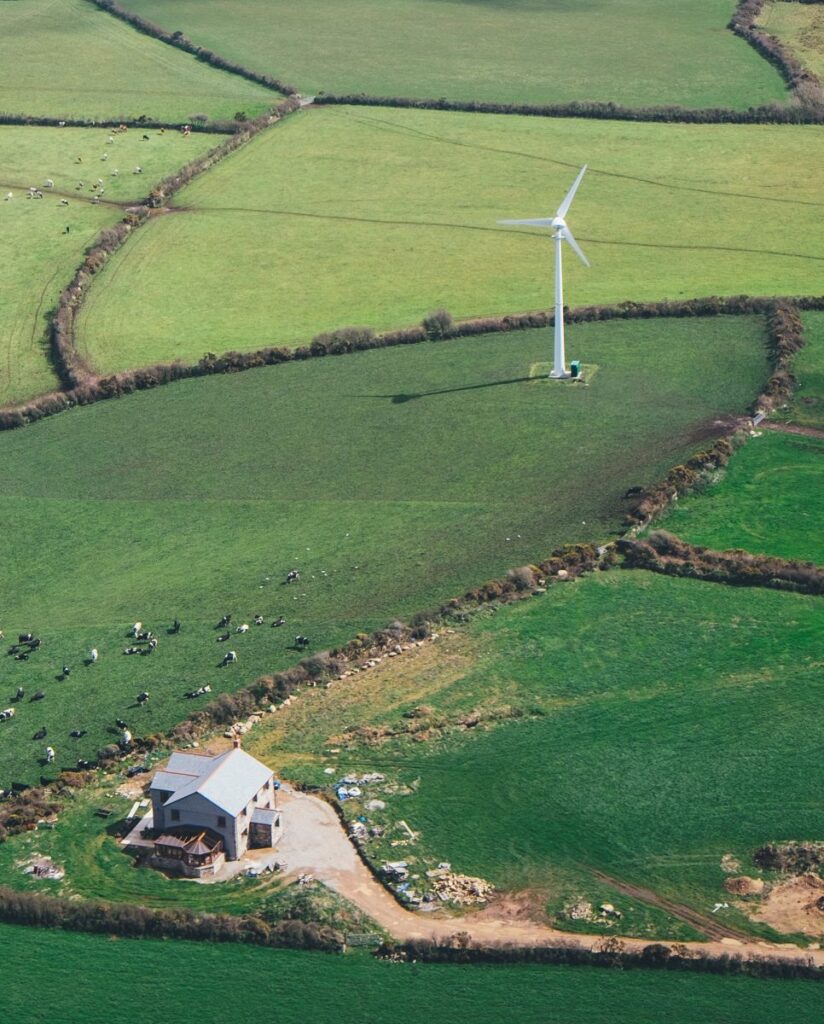
Regulators and wind companies appear to still be making things up as they go along. Germany wants turbines 1000m away from residences.1 Poland is playing with 700m.2 Ontario is only 550m.3 Quebec has no province-wide setback, but some counties have made their own.4 And Alberta seems to determine setbacks by noise levels — which has placed turbines within only several hundred meters of people’s homes.5 As a 2012 study noted well, “planners are not using a consistent method to ascertain appropriate distances.” 6
What is certain is that those who have studied adverse health effects (AHE) upon humans and animals universally recommend them “setback” much further than any of the above recommendations. Cardiologist Dr. Ben Johnson, M.D., concluded in his study that current setbacks…
…do NOT account for fluctuating audible and ILFN [infrasonic low frequency noise] acoustic energy – that have been correlated to AHEs, or the location of non-participating residences on their properties.
“A Madison County, Iowa, Cardiologist’s Investigation and Response to Industrial Wind Turbines in the Rural Residential Countryside Regarding Concerns of Adverse Health Effects And, Exploration of the Relevant Accompanying Larger Issue”, p. 6
There is… clear evidence that wind turbines generate low frequency sound (infrasound) and acoustic signals which can be detected at considerable distances (many kilometres) from wind farms on infrasound detectors and low-frequency microphones.
“Adverse Health Effects of Wind Turbines”, Keith Stelling, MA, MNIMH, Dip Phyt, MCPP (England), with additional files from Carmen Krogh, BScPharm; October 20, 2009; pp. 18-19
Indeed, Marcillo et al.’s study in 2015 discovered that “Infrasound from a 60-turbine wind farm was found to propagate to distances up to 90 km under nighttime atmospheric conditions. 7
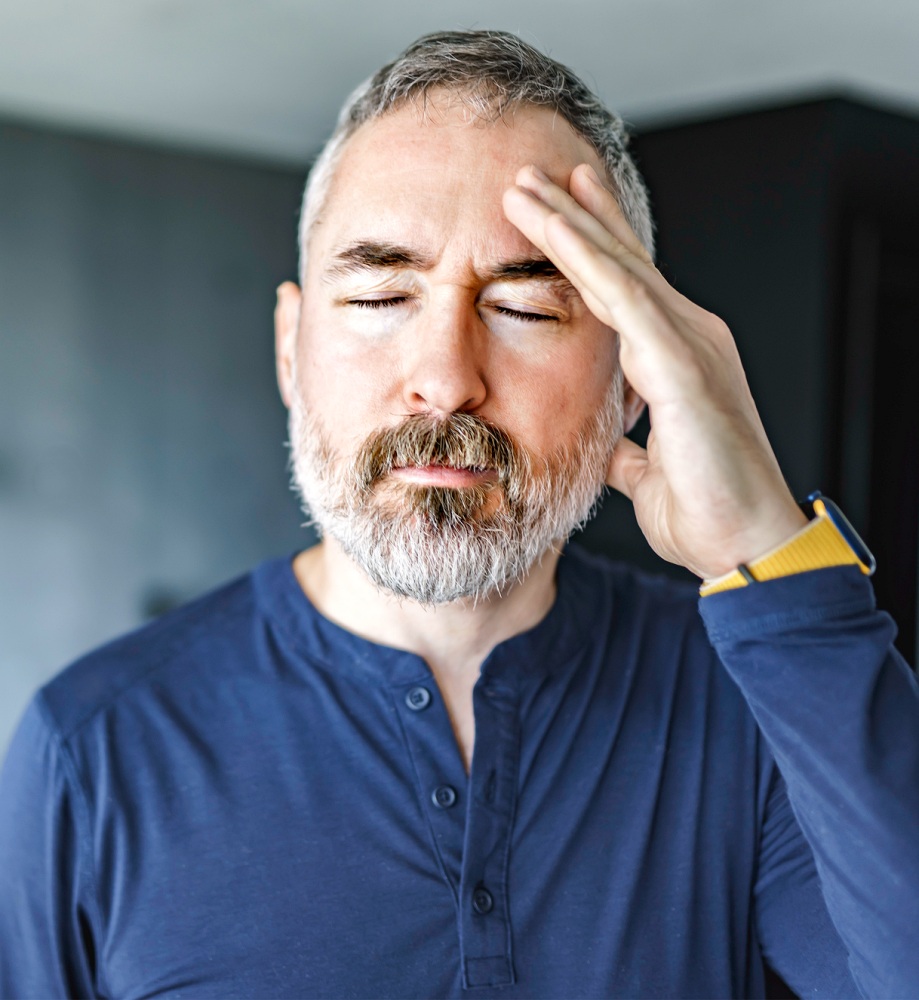
Acoustician Steven Cooper of the European Acoustics Association Technical Committee on Noise, has completed numerous current studies on the affects of wind turbine “noise.” While wind companies seem only concerned with the audible spectrum of sound, Cooper “found residents could identify pulsations [infrasound] from the wind farm even though it could not be heard.”8 These were found to be “centered in the frontal lobes of the brain.”9
It’s these low-frequency pulsations that have now been identified as “Wind Turbine Syndrome” (WTS) — terminology coined by Dr. Nina Pierpont, MD, PhD in her peer-reviewed research — along with its accompanying symptoms: headache, painful pressure on the ears, dizziness, weakness, tachycardia, tinnitus, nausea, nosebleeds, insomnia, visual blurring, panic attacks with sensations of internal quivering to more general irritability, etc. 10 The symptoms are sometimes so severe, that people have been forced to abandon their homes or workplaces.11
What we have observed is that people who live near the bigger wind turbines develop more quickly and more intense health problems than people who live near smaller wind turbines… there’s no option for this person but to run… people are put into impossible situations — impossible situations.
Professor Mariana Alves-Pereira, “Infrasound and Low Frequency Noise (ILFN)”, YouTube.com
In “The ‘Bad Science’ Behind the Wind Turbine Noise Guidelines”, the authors conclude that for “current generation” turbines of 120m height and 80m diameter, a 2km buffer zone is recommended.12 However, Dr. Sarah Laurie, MD, of the Waubra Foundation confirmed Dr. Pierpont’s findings in her submission to the Australian Federal Senate Inquiry into rural windfarms in 2011. She called for:
An immediate temporary halt in construction of wind turbines closer than 10km to human habitation until adequate research is completed, in order to determine what is a safe setback of turbines from homes and workplaces.
Dr. Sarah Laurie, MD, February 10, 2011, cf. “Submission to the Australian Federal Senate Inquiry on Rural Wind Farms”, p. 5
She notes, “Specifically, hypertension in conjunction with turbine operation has been reported up to 5km away, and body vibrations and nocturnal wakening in a panicked state up to 10km. ”13 Her warnings, consistent with reports in other countries, were ignored.
I personally would not live 20km away from them… We have identified the wind turbine acoustic signature in a home 12km away from the closest wind turbine.
Professor Mariana Alves-Pereira, “Infrasound and Low Frequency Noise (ILFN)”, YouTube.com
Then again in 2018, Cooper also determined:
…my work has shown that inaudible pulsating noise can create impacts. As such it would appear that I have provided some validation of a hypothesis provided by Dr. Nina Pierpont in 2009.
“Sensing but Not Hearing: The Problem of Wind Turbine Noise (Interview with acoustician Steven Cooper, AU“, February 2, 2018
Neither are these studies remaining in the realm of theory and testing. In 2021, a court in France ruled in favor of a couple suffering from Wind Turbine Syndrome.14 Indeed, the winds of change are slowly beginning to blow in recognition of the human cost of industrial wind plants. However, with trillions of dollars being handed out globally to “renewable resources,” even though they can never replace reliable forms of energy,15 the willpower to admit that cost is sadly limited.
At the time of her studies, Dr. Pierpoint concluded:
This study and other studies reviewed in the report indicate that safe setbacks will be at least 2 km (1.24 miles) and even longer for larger turbines and in more varied topography.
Dr. Nina Pierpont, MD, PhD, “Wind Turbine Syndrome: A Report on a Natural Experiment”, n. 15
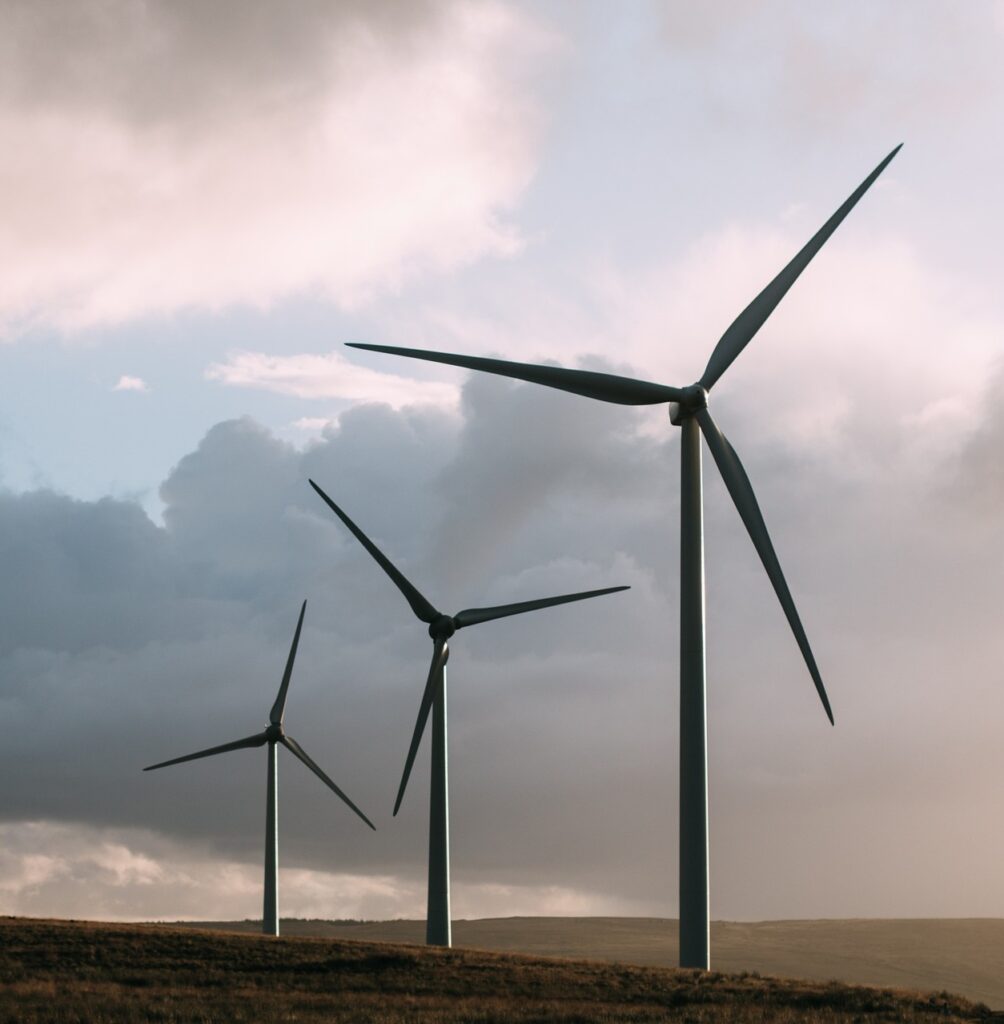
She added: “In hilly or mountainous topographies, where valleys act as natural channels for noise, this 1.25 mile set-back should be extended anywhere from 2-3 miles from homes.”16 However, Cooper found that, “For wind farms elevated on ridges (using say 3MW turbines) the distance increases. Depending upon the sensitivity of the individuals the distance for no issues can be as much as out to 10 kms.” That’s significant for the Northern Valley project near Elk Point, Alberta, which is proposed above the North Saskatchewan River valley. However, the turbines in Pierpont’s and even Cooper’s study were smaller than the massive units being constructed today. According to Elemental Energy, the turbines in the Northern Valley will be 200m or higher (from ground to top of blade) and 6MW or more.
And size matters. Danish Acousticians Moller & Pedersen, published in a peer reviewed Acoustics Journal,17 found that larger turbines emit more low frequency noise proportionately compared to smaller turbines, based on actual noise measurements, rather than models. South Australia residents reported the effects of low frequency noise out to 10km in certain weather and wind conditions forcing 5 households to abandon their homes semi-permanently, as they would become unwell when they were home and the turbines were operating in certain wind conditions.18
A Finnish study found strong evidence for adverse effects even further away from wind plants. “It has been noticed from experience that after the construction of wind power plants, usually within a few months, people in the surrounding area have begun to get a wide range of symptoms,” says Markku Mehtätalo, Chairman of the Finnish Association for Environmental Health.19 Thus, a study was launched in 2016 that included about 50 families, with symptoms of each family member recorded. A total of about 200 people were involved in the study.
The pilot study carried out in Satakunta and Northern Ostrobothnia in Finland shows that the damage caused by infrasound from wind power plants will only decrease significantly more than 15 kilometers away from wind turbines… There were about three times more harmful or more serious symptoms near wind turbines (less or about 15 km from wind power plants) than further away.
Pilot study here (Mehtätalo et al. 2019); translation of study here
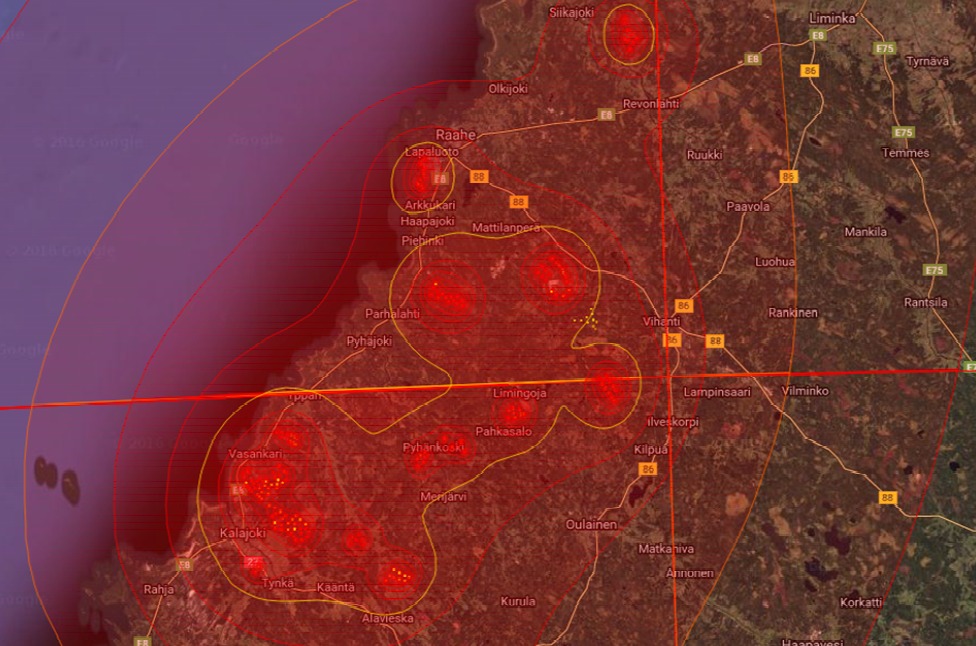
In 2017, based on infrasound measurements made in different parts of Finland, it has been
found that 15–20 km is a typical distance where the infrasound pulses of wind turbines can be
detected by measurements to travel in almost all circumstances. That has stunning health implications for the entire town in the Elk Point region, which is also subject to increased reflectivity due to the valley.
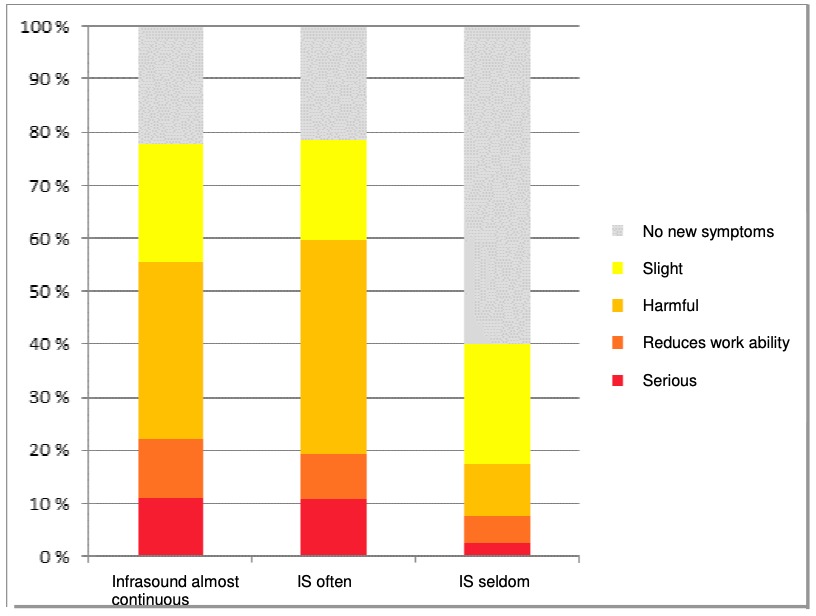
This confirms a Germany study that found pulsating infrasound 20km from wind winds. Watch:
Dr. Sarah Laurie reported back in 2011 that…
…well over 20 rural families in Australia… have been forced to leave their homes because of serious health problems they have developed since the turbines commenced operating… Some farmers are saying even if they move away, they get sick when they return to farm their land, which is consistent with what we know about the effects of ongoing exposure to low frequency noise, once someone is “sensitised”… This pattern of illness, and the identical range of symptoms, is being reported all over the world, in conjunction with operating wind turbines…
“Physician calls for 10 km setbacks (Australia)”, September 26, 2001
As noted by Cooper and others, Dr. Laurie also found that, “Universally, the symptoms ameliorate with cessation of exposure, only to return again when people are re-exposed to operating wind turbines.”20
A Note on Health Canada’s Study
Health Canada launched its own study in 2012 with results provided by the CCA (Canadian Council of Academics) to determine a causal relationship between wind turbine noise and adverse health effects.21 They concluded that there was “insufficient evidence” and that more study is required.

Ontario residents, where thousands of wind turbines have been erected and hundreds of Ontarians have been made ill, were livid. Several scientists lambasted the study as deeply flawed including noise engineer Stephen E. Ambrose, ASA, INCE. He noted that Health Canada excluded several key studies on infrasound, including Stephen Cooper’s work.22 Other findings, such as those of the October 14, 2014 Brown County Board of Health, who declared wind turbines a “Human health hazard”, were ignored.23 Moreover said Ambrose, “CCA did not present evidence that they interviewed adversely affected neighbors. CCA did not recognize significant differences between non–wind turbine urban communities and rural environments where most wind turbines are located.” The study merely conceded that some people experience what it calls “annoyance.”
Noise expert Dr. Arline Bronzaft responded to the study saying she prefers the word, “harm” to “annoyance,” ‘which most agree is trivializing.’ Dr. Bronzaft pointed out to NA-PAW (North American Platform Against Wind):
When a noise continues to be intrusive and ‘”annoying, it can lead to stress and sustained stress diminishes quality of life and, in time, can result in physiological damage, e.g. cardiovascular disorders. Studies on other sources of noise, e.g. aircraft, rail, highway have demonstrated clearly that noise is indeed a health hazard. I quote from the U.S. EPA 1978 pamphlet “Noise: A Health Problem.” “It is finally clear that noise is a significant hazard to public health. Truly, noise is more than just an annoyance.”‘
April 16, 2015, na-paw.org
But here again, the focus is more on the audible rather than dangerous inaudible “noise.” What you can’t hear can hurt you.
And yet, there have been several published studies on infrasonic sound in relation to wind turbines that drew opposite conclusions. In most studies, participants were placed in a laboratory setting where they reproduced infrasonic frequencies and observed the results. The studies frequently conclude there are no ill health effects, which contradicts the real-world experience of countless families. Why?
Numerous acousticians have identified that this flawed approach does not account for several variables in real-world applications and that current “noise” guidelines only account for audible frequencies.
The dismissal of complaints is frequently based on inappropriate techniques such as the application of A-weighting, a lack of understanding of vibration transmission including building resonance, and a lack of basic understanding about the perception of low frequencies by complainants, for instance the lowering of the lower audibility threshold arising from exposure.
Hazel Guest, UK Noise Association 5th March 2003, Abstract
Cooper responded to queries by Wind Concerns on studies24 that concluded that infrasound did not affect participants. He emphasizes that his work is related to using “real wind turbine noise” as where these studies are generating “simulated infrasound” and “are referring to infrasound as a noise – not modulation of the signal at an infrasound rate”. For example…
The sound system to deliver the signal has problems with producing a full spectrum. Reproducing signals under a pillow does not reflect what residents receive.
Steven Cooper, Acoustician, email, July 20, 2023
Thus concludes the Institute of Acoustics:
…noise complaints from within communities and by local residents need to be taken seriously as being well founded and legitimate. They should be thoroughly investigated and that there should be no attempts to undermine these complaints as being as a result of mere ‘annoyance’ due to a perceived notion that complainants just don’t like wind turbines or are even motivated by other non-acoustical factors.
Review of WSP/Parsons Brinckerhoff and Institute of Acoustics Amplitude Modulation Studies
It has become clear to all affected parties in several countries that wind turbine farms placed near residential areas is a grotesque violation of human rights. There is a bitter irony in so-called “green” advocates who lament carbon emissions, but fall mute when it comes to the noise emissions of wind turbines that are harming animal and human health, and damaging the environment. Someday, a generation will look back on the reckless “renewable energy” fever that cost trillions of dollars, and too many tears.
In the effort to “save the climate”, are we destroying the environment?… Now that we know that renewables can’t save the planet, are we going to let them keep destroying it?
Michael Shellenberger is President of Environmental Progress, TED Talk, January 4, 2019; youtube.com
Wind Concerns is determined that it will be our generation.
- cf. noerr.com[↩]
- They seem to have settled on 700m by April 1, 2023; cf. euractiv.com[↩]
- ontario.ca/document/technical-guide-renewable-energy-approvals/required-setback-wind-turbines[↩]
- windturbinesyndrome.com[↩]
- determined by the Alberta Utilities Commission (AUC) [↩]
- “Determining appropriate wind turbine setback distances…”, Energy Journal, Vol. 41, February 2012[↩]
- “On infrasound generated by wind farms and its propagation in low-altitude tropospheric waveguides”, August 21, 2015[↩]
- “Sensing but Not Hearing: The Problem of Wind Turbine Noise (Interview with acoustician Steven Cooper, AU“, February 2, 2018[↩]
- “Health Effects of Industrial Wind: The Debate Intensifies (update with Steven Cooper)“July 30, 2020[↩]
- cf. Jeopardizing the Health of Lakeland Residents[↩]
- cf. Down Wind: What Awaits the Lakeland[↩]
- cf. https://docs.wind-watch.org/BADSCI-lr.pdf[↩]
- Ibid., p. 18[↩]
- cf. Jeopardizing the Lakeland: Turbines[↩]
- cf. Oxford Scientist: Wind Power Not Reliable[↩]
- “Your Guide to Wind Turbine Syndrome” by Dr. Calvin Martin Luther, p. 19, July 2010[↩]
- Moller H, Pedersen CS, Low Frequency Noise from Large Wind Turbines in J. Acous. Soc. of Am. 129 (6) June 2011 pp 3727-3744[↩]
- “Physician Calls for 10km Setbacks“, September 26, 2011[↩]
- cf. here[↩]
- Ibid.[↩]
- canada.ca/en/health-canada/services/health-risks-safety/radiation/everyday-things-emit-radiation/wind-turbine-noise/wind-turbine-noise-health-study-summary-results.html[↩]
- April 13, 2015, wind-watch.org[↩]
- cf. wind-watch.org/[↩]
- eg. here and here[↩]
Mark Mallett is a former award-winning reporter with CTV Edmonton and an independent researcher and author. His family homesteaded between Vermilion and Cold Lake, Alberta, and now resides in the Lakeland region. Mark is Editor in Chief of Wind Concerns.



So wish this info was available in the mainstream media to educate people that this is real.
Pls watch this movie https://youtu.be/7RgyLDVlAg4?si=Y3_9ycUXzucwvYXg
I’m in Denmark, and I can guarantee that this is true! I can see 8 wind turbines (135 meters tall, but they will replace them with 185 meters tall ones) from my kitchen window, less than 2 kilometers away, and since I moved here 3.5 yrs ago, my hashimotos is out of whack, I suffer from bad sleep, insomnia, heart palpitations, etc. Another thin: many old folks develop dementia and Alzheimer’s, etc. They are dying in unusual numbers, but that could be related to the ‘jab’ also.
I appreciate this article and video immensely, and I have forwarded it to numerous people.
Unfortunately, this information is not circulated to the general public to create an awareness of the ill effects of wind farms at the moment the focus is on the ”green agenda” and taking advantage of government subsidies and making wealthy people wealthier.
Hi Kenny – this is probably the best documentary on YouTube in all categories. It is very, very upsetting to see how big foreign banks, and google, are involved in destroying thousand year old forests in Sweden! This movie is made by a Dutch named Marion Poels. https://youtu.be/7RgyLDVlAg4?si=Y3_9ycUXzucwvYXg